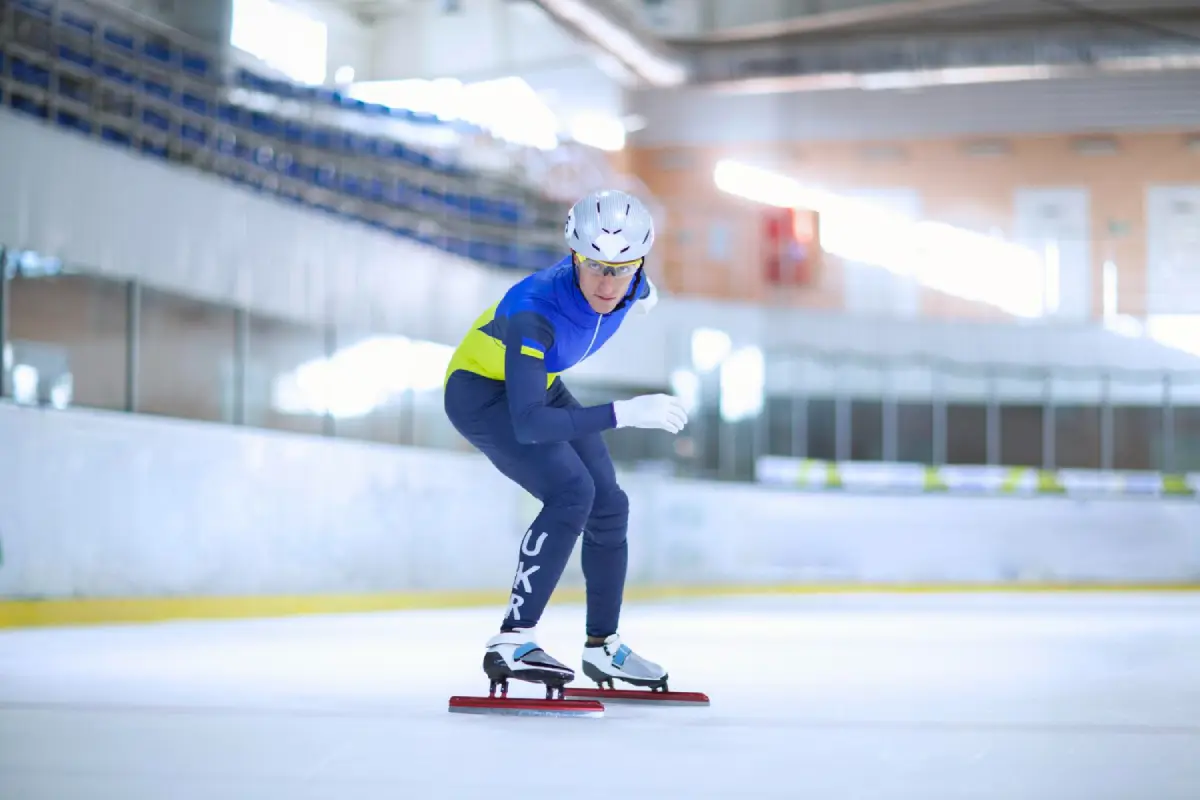Creating an Indoor Skating Experience: A Guide to Year-Round Ice Sports at Home
For those who love the rush of skating on ice, at-home rinks offer a fresh approach to enjoying this activity year-round. Skaters can glide, practice, and play without worrying about chilly temperatures or crowded public rinks by creating a dedicated synthetic ice rink inside a home or personal space. The option to install a rink indoors caters to everyone, from growing families introducing young children to the sport, to serious athletes looking for individual skill development.
With advancements in synthetic ice technology, skaters now have surfaces that feel remarkably close to real ice, ensuring an authentic experience that isn’t dependent on freezing weather or expensive refrigeration systems.
Countless households are turning to at-home skating solutions as part of their daily routines. These rinks eliminate the hassles of travel, unpredictable weather, and packed community arenas, while transforming underused spaces like basements or garages into hubs of activity and recreation. Whether for early morning practice or an energetic family night, an indoor rink offers the freedom and privacy to skate whenever inspiration strikes. It becomes not just a place for sport, but a centerpiece for connection, fitness, and fun within the home.
Contents
Why Build an Indoor Skating Space?
The desire for home-based recreational options has never been stronger. With changing climates and busy schedules, having your skating rink means every family member always has a reliable place to play, improve skills, and stay active under one roof. Increased demand for private in-home rinks—especially during periods when community centers are less accessible or have capacity limits—highlights just how much people value this unique amenity.
According to The New York Times, the popularity of customized home rinks has soared, driven by families eager to invest in their children’s passions, host memorable gatherings, or wind down with a relaxing skate after a long day.
Skaters of every age and skill level benefit from the relaxed atmosphere of a home rink. Beginners can wobble and learn at their own pace. At the same time, competitive enthusiasts can log countless hours of focused practice without interrupting scheduled sessions or crowded ice.
Private rinks also invite friends and neighbors to participate, bringing communities together in a safe environment. For many, a home rink becomes an outlet for creativity and expression, offering a blank slate for games, drills, or even impromptu performances. The result is a multi-use space packed with potential.
Materials for At-Home Rinks
The transformation of home rinks over recent years is mainly due to breakthroughs in synthetic ice technology. Unlike refrigerated ice, requiring constant maintenance, sophisticated machinery, and high energy costs, synthetic rinks use advanced polymer panels that deliver a slick, ice-like glide.
These interlocking panels come in various sizes and can be configured to fit nearly any space, from a cozy garage to a full-sized basement. Homeowners can install them over most flat, smooth surfaces, minimizing the need for construction or costly modifications.
Choosing the right materials involves weighing a few key features. Look for high-density synthetic panels that offer lasting durability and a realistic feel underfoot, as well as surface coatings designed to reduce friction and optimize performance. Some brands provide reversible panels for extended use or edge guards to contain pucks and protect walls.
Best of all, synthetic ice rinks are low-maintenance: they never melt, don’t require chemicals, and can handle everything from basic beginner drills to aggressive hockey training without losing quality. The upfront investment pays for itself in convenience and longevity.
Key Steps to Designing Your Home Rink
- Pick the Best Location: Start by exploring available areas in your home—garages, basements, or unused rooms are all strong candidates. The floor should be level and free from leaks or moisture, offering safety and comfort during skating sessions.
- Plan the Layout: Sketch out your preferred rink design and decide on extras suited to your family’s needs. Allow enough space for movement and any future upgrades. Removable systems or modular layouts support households needing rooms for multiple purposes.
- Install the Surface: Clear and clean the subfloor, using underlayment if the manufacturer recommends. Connect the synthetic panels tightly, checking that seams are secure and the surface remains flush for a smooth skate.
- Safety First: Install border systems to keep skates and pucks contained. Soft, flexible dashboards ensure the environment remains safe, particularly for younger or high-energy skaters.
- Personalize: Add fun elements—nets for hockey training, cones for agility drills, even lines for simulated figure skating routines. Speakers, decorative lighting, and wall graphics can give your rink its unique flair and invite creativity at every turn.
Benefits for All Ages and Skill Levels
Bringing skating indoors eliminates barriers for people at every stage of their skating journey. Kids build balance, flexibility, and confidence with every session, while teenagers and adults can dial in advanced skills in stick handling, spins, or speed. Skating together encourages family bonding and healthy competition, giving everyone an outlet to blow off steam and stay active when the weather doesn’t cooperate.
The health benefits of skating are considerable—not only does it burn calories and tone muscles, but it also supports bone health, posture, and mental clarity. According to Verywell Fit, regular skating improves joint flexibility and cardiovascular endurance, making it a standout exercise that’s both social and dynamic.
Beyond the physical, skating can lift spirits and foster determination. The discipline learned on the rink often transfers to other areas of life, with consistency and resilience leading to greater confidence, on and off the ice. Synthetic rinks can be easily reconfigured for households with multiple interests, allowing the space to shift from skills training to parties or group fitness classes in a snap.
Common Safety Considerations
- Always use helmets and pads, especially for children and new skaters. Even experienced athletes should protect themselves during spirited games or solo practice.
- Supervision is key for younger participants. Setting ground rules about sharing space and moving safely helps prevent collisions and injuries.
- Keep the rink area clear. Remove loose gear, toys, or debris before each session to keep the surface smooth and hazard-free.
- Avoid overcrowding, which increases the risk of accidents. Maintain a manageable number of skaters based on the size of your rink, and encourage everyone to take turns.
- Check the synthetic panels, borders, and surrounding fixtures regularly for signs of wear or damage. Quick attention to any issues can prevent accidents and preserve your investment.
Maintaining Your Indoor Rink
Keeping your indoor rink in top shape is easier than many homeowners expect. Most synthetic rinks require occasional sweeping to eliminate dust and the buildup of skate shavings and periodic mopping using gentle, non-abrasive cleaners. Avoid harsh chemicals, which can degrade surface quality or create slick, unsafe spots. Inspect panels, connectors, and edging every few weeks to catch any separations or irregularities. Address these minor issues promptly, and your rink will provide a smooth, consistent glide for years.
If you use the room for other activities, modular rinks make it a breeze to disassemble, store, and rebuild as needed. This flexibility empowers you to host a dance party, convert the area to a workout studio, or reclaim it as a living space between skating seasons. Home rinks can be surprisingly long-lasting, and many families find their panels retain quality through hundreds of hours of use without degradation.
Getting Started and Finding Inspiration
Designing an indoor skating rink is a rewarding project that invites experimentation, collaboration, and a dash of do-it-yourself spirit. Creative homeowners transform garages into mini-hockey arenas or convert unfinished basements into sparkling rinks with lighting and scoreboards.
Online forums and home improvement sites contain layout ideas, safety solutions, and before-and-after photos from others who’ve built their dream skating spaces. Draw inspiration from their stories—or better yet, involve friends and family in brainstorming how to make your home rink one to remember.
The project improves daily life and adds tangible value by providing a space for entertaining, keeping fit, or helping young athletes reach their goals. Most importantly, it encourages playful engagement and fosters healthy routines, ensuring your investment pays off in laughter, tradition, and new skills for years ahead.
Final Thoughts
Building an indoor skating rink is more achievable than ever thanks to innovations in synthetic ice, user-friendly installation processes, and abundant online resources. With thoughtful design, a focus on safety, and a willingness to be creative, anyone can bring the joy of skating home.
Whether you’re hoping for better practice time, enhanced fitness, or simply more ways to unwind with family and friends, a dedicated rink transforms unused square footage into a source of excitement and inspiration. With the right plan, you can enter a lifestyle where fun, movement, and togetherness are always in season.

